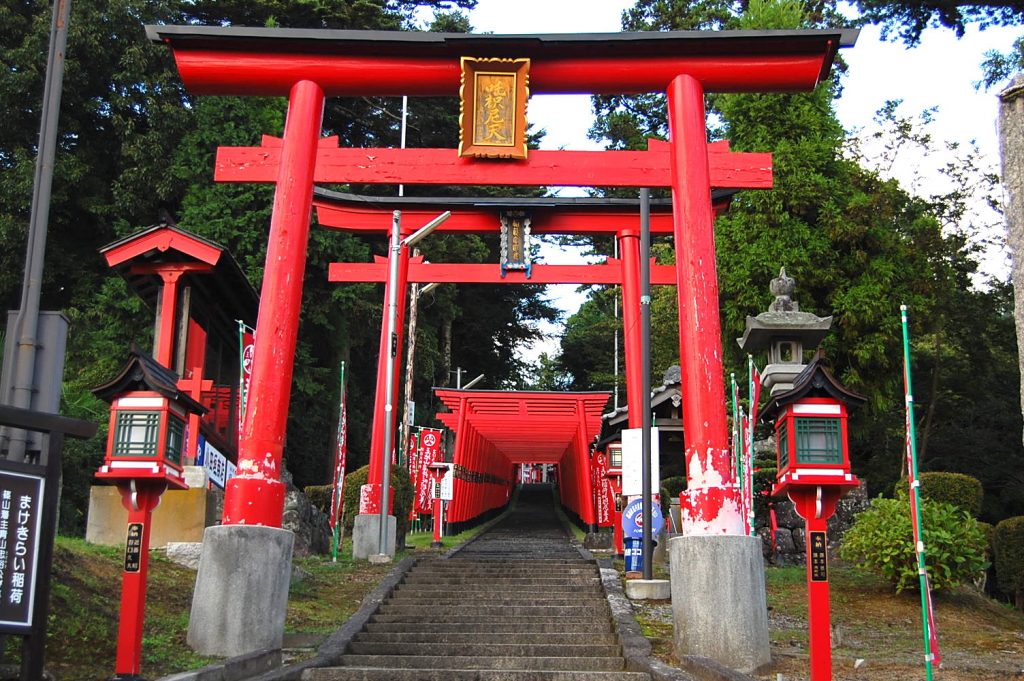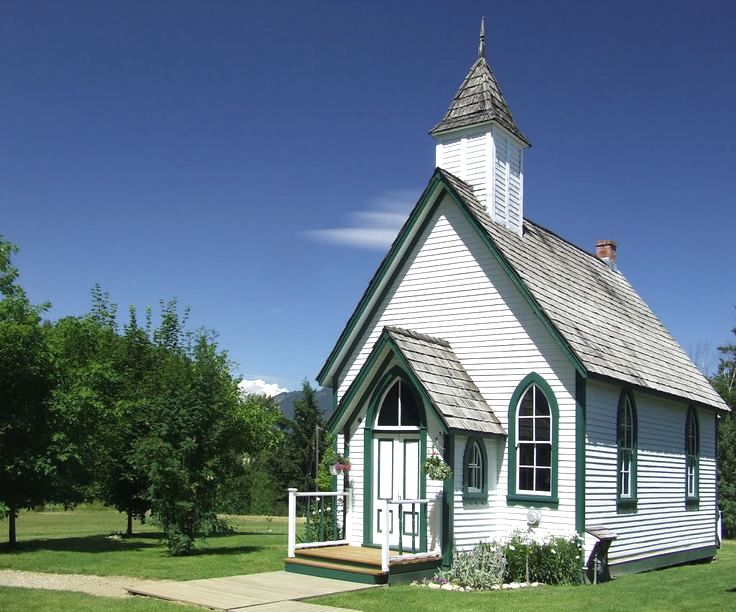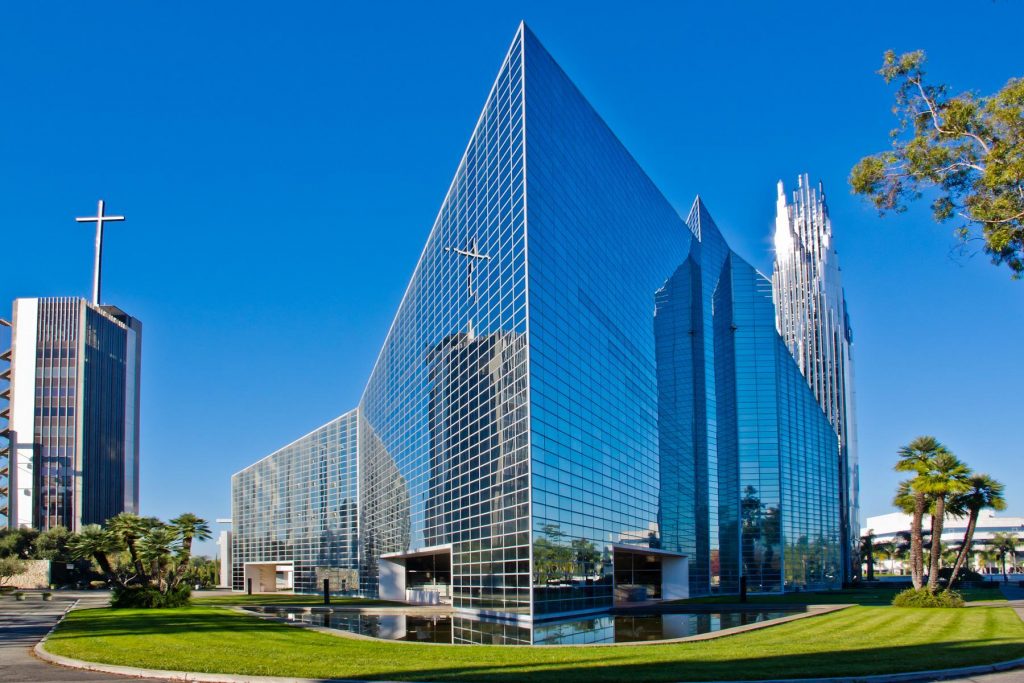
Living in a completely foreign culture is sometimes the best way to get insights into your own culture, to be able to see things that are so obvious they’re hiding in plain sight, thus require your looking at them from “the outside” to make them apparent.
On a lighter note, let me append to that how utterly amazed I am by my talent for coming up with genuinely stupid questions about Japan, its customs, its culture, its people.
The particular one I’m about to reveal isn’t really that bad . . . maybe only 4 or 5 on the cluelessness scale. Here it is . . .
A few years back I asked my wife Masumi — who displays monumental patience with me, probably because she knows I’m truly curious about Japan, not inclined to make nugatory small talk — about the architectural manifestations of “spiritual life” here. The question: “Why are there so many shrines and temples here in Japan, darling?” (Okay . . . I didn’t say ‘darling’ or ‘sweetheart’ or ‘lamb chop’ or ‘tofu burger’ to her. It’s just not my style.)
I don’t recall her exact words. But it went something like: “Have you ever looked around in America? There are churches everywhere you go.”
My God! She’s right!
From small and modest . . .

To majestic and sometimes garish . . .

There are churches everywhere!
To make things truly convoluted, while all these churches essentially promote Christian beliefs, there are so many denominations of Christianity, it’s impossible to keep track of them all. Lutheran, Baptist, Catholic, Episcopalian, Church of Christ, 7th Day Adventist, Mormon, Presbyterian, Methodist, Christian Science, on and on.
Then to make things even more disorienting to anyone hailing from the East, in addition to the Christian churches, there are Jewish temples — also with an assortment of subtle shadings, e.g. Orthodox, Reform, Conservative, Reconstructionist, Humanistic, Hasidic, Haredi, Chabad — and then in recent times mosques which serve as the spiritual centers for the flocks who adhere to Islam.
What a menagerie!
It makes Japan look like it’s just at the early stages of ramping up its institutionalization of theology, though in point of fact, the two dominant religions here — Buddhism and Shinto — actually go back respectively about fifteen and thirty centuries. Maybe Japan can’t hold a candle — or stick of incense — in sheer numbers to America, or a country like Thailand, which has over 40,000 Buddhist temples alone, but I can speak from experience: There are still plenty of holy sites, temples and shrines here. Even some Christian churches.
Anyone who’s traveled the globe will tell you that this is the case just about everywhere there are people living in some organized fashion.
The obvious conclusion is that humans like to build places of worship, and to varying degrees visit these places of worship to do whatever it is they do in places of worship.
Yes, there’s worship. But while some people are kowtowing to some statue, idol, entity, ghost, relic, concept, abstraction, surrogate or whatever, others are doing something else. Wishing. Meditating. Fantasizing. Maybe scoping out what others are doing or wearing. What car they drove, what camel they rode in on, who they’re with. These days peaking at their smart phones. Checking their email. Their text messages. Tweeting or looking at their Facebook news feed. Discreetly taking selfies.
Though it’s been quite a while since I attended Catholic services, when I was a boy I had to go to Mass six days a week, thus had more than ample time to observe the devout in their Sunday best or Saturday khakis. And frankly, even back then I don’t remember much real worshipping going on. Yes, a small faction followed along in their prayer books, mouthing the incantations of the priest. But the vast majority were marking time, minds elsewhere, checking their watches. God didn’t seem to mind, or notice. No bolts of lightning ripped thought the ceiling and struck down the inattentive. God is infinitely patient, I’m told by my Bible-toting friends. (Tell that to the victims of Sodom and Gomorrah!)
I occasionally attend services here. Usually at our local shrine which I can walk to in about five minutes. A celebration typically associated with a holiday. It’s mostly a social thing.
People do pray. We each make appeals to invisible higher powers, for the things most of us on the planet desire: Happiness, health, wealth, good fortune, love, maybe marriage, harmonious relationships. There’s that universality again: concerns and values we all seem to share as human beings, regardless of where we have settled down to make a life. Concerns and values expressed in places which we designate for whatever you want to call that “quiet time” we all seem to embrace for addressing something inside us that is outside of us … greater than us … or maybe representing the us we wish we could be. Whether we worship this other or just like to sidle up to it now and then, it’s convenient to have some special designated place — a temple, a mount, a church, mosque, cathedral — to set the mood and provide the proper environment.
Here are just a few shrines and temples within easy bike-riding distance of my house.
Yes, houses of worship are everywhere here in Japan too, but at a much more modest level of ‘everywhere’ than in the U.S., and most certainly not in the over-abundance I now can see is a defining characteristic of my homeland.
It makes me wonder . . .
What exactly are they trying to prove over there? Are they maybe trying a little too hard? To be blunt, it appears all that praying and worshipping isn’t really working very well.
Why would I think that?
Americans like to say: “God is on our side.”
Really? If God truly is, then He must have a very strange sense of humor.
Or a serious mean streak.




Life In Japan: Shrines and Temples
Living in a completely foreign culture is sometimes the best way to get insights into your own culture, to be able to see things that are so obvious they’re hiding in plain sight, thus require your looking at them from “the outside” to make them apparent.
On a lighter note, let me append to that how utterly amazed I am by my talent for coming up with genuinely stupid questions about Japan, its customs, its culture, its people.
The particular one I’m about to reveal isn’t really that bad . . . maybe only 4 or 5 on the cluelessness scale. Here it is . . .
A few years back I asked my wife Masumi — who displays monumental patience with me, probably because she knows I’m truly curious about Japan, not inclined to make nugatory small talk — about the architectural manifestations of “spiritual life” here. The question: “Why are there so many shrines and temples here in Japan, darling?” (Okay . . . I didn’t say ‘darling’ or ‘sweetheart’ or ‘lamb chop’ or ‘tofu burger’ to her. It’s just not my style.)
I don’t recall her exact words. But it went something like: “Have you ever looked around in America? There are churches everywhere you go.”
My God! She’s right!
From small and modest . . .
To majestic and sometimes garish . . .
There are churches everywhere!
To make things truly convoluted, while all these churches essentially promote Christian beliefs, there are so many denominations of Christianity, it’s impossible to keep track of them all. Lutheran, Baptist, Catholic, Episcopalian, Church of Christ, 7th Day Adventist, Mormon, Presbyterian, Methodist, Christian Science, on and on.
Then to make things even more disorienting to anyone hailing from the East, in addition to the Christian churches, there are Jewish temples — also with an assortment of subtle shadings, e.g. Orthodox, Reform, Conservative, Reconstructionist, Humanistic, Hasidic, Haredi, Chabad — and then in recent times mosques which serve as the spiritual centers for the flocks who adhere to Islam.
What a menagerie!
It makes Japan look like it’s just at the early stages of ramping up its institutionalization of theology, though in point of fact, the two dominant religions here — Buddhism and Shinto — actually go back respectively about fifteen and thirty centuries. Maybe Japan can’t hold a candle — or stick of incense — in sheer numbers to America, or a country like Thailand, which has over 40,000 Buddhist temples alone, but I can speak from experience: There are still plenty of holy sites, temples and shrines here. Even some Christian churches.
Anyone who’s traveled the globe will tell you that this is the case just about everywhere there are people living in some organized fashion.
The obvious conclusion is that humans like to build places of worship, and to varying degrees visit these places of worship to do whatever it is they do in places of worship.
Yes, there’s worship. But while some people are kowtowing to some statue, idol, entity, ghost, relic, concept, abstraction, surrogate or whatever, others are doing something else. Wishing. Meditating. Fantasizing. Maybe scoping out what others are doing or wearing. What car they drove, what camel they rode in on, who they’re with. These days peaking at their smart phones. Checking their email. Their text messages. Tweeting or looking at their Facebook news feed. Discreetly taking selfies.
Though it’s been quite a while since I attended Catholic services, when I was a boy I had to go to Mass six days a week, thus had more than ample time to observe the devout in their Sunday best or Saturday khakis. And frankly, even back then I don’t remember much real worshipping going on. Yes, a small faction followed along in their prayer books, mouthing the incantations of the priest. But the vast majority were marking time, minds elsewhere, checking their watches. God didn’t seem to mind, or notice. No bolts of lightning ripped thought the ceiling and struck down the inattentive. God is infinitely patient, I’m told by my Bible-toting friends. (Tell that to the victims of Sodom and Gomorrah!)
I occasionally attend services here. Usually at our local shrine which I can walk to in about five minutes. A celebration typically associated with a holiday. It’s mostly a social thing.
People do pray. We each make appeals to invisible higher powers, for the things most of us on the planet desire: Happiness, health, wealth, good fortune, love, maybe marriage, harmonious relationships. There’s that universality again: concerns and values we all seem to share as human beings, regardless of where we have settled down to make a life. Concerns and values expressed in places which we designate for whatever you want to call that “quiet time” we all seem to embrace for addressing something inside us that is outside of us … greater than us … or maybe representing the us we wish we could be. Whether we worship this other or just like to sidle up to it now and then, it’s convenient to have some special designated place — a temple, a mount, a church, mosque, cathedral — to set the mood and provide the proper environment.
Here are just a few shrines and temples within easy bike-riding distance of my house.
Yes, houses of worship are everywhere here in Japan too, but at a much more modest level of ‘everywhere’ than in the U.S., and most certainly not in the over-abundance I now can see is a defining characteristic of my homeland.
It makes me wonder . . .
What exactly are they trying to prove over there? Are they maybe trying a little too hard? To be blunt, it appears all that praying and worshipping isn’t really working very well.
Why would I think that?
Americans like to say: “God is on our side.”
Really? If God truly is, then He must have a very strange sense of humor.
Or a serious mean streak.